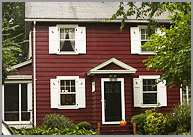
Most homeowners wait until a hurricane is bearing down on them before they start wondering what kinds of damage are covered by their insurance policies. Problem is, once a hurricane warning is declared, insurance companies close their doors to new business. Now is the time for homeowners to review their policies to understand what is covered — and what isn’t — in the event of storm damage, insurance officials say. You shouldn’t wait to think about it until doom is at your door.
Homeowner policies usually cover damage from wind and rain — but most now carry a special hurricane deductible of between 2 percent and 5 percent of the home’s value. Check to see how much your insurer will pay to rebuild your home. The amount should reflect the current value of the home, which should be automatically adjusted by your insurer each year. A big misconception is that flood damage is covered by the typical homeowner policy. It isn’t. Most homeowner policies don’t cover damage caused by rising waters. For example, if a hurricane tears the roof off a home and rain damages the owners’ belongings, the homeowner policy would pay to repair the home and replace possessions because the damage was caused by “wind-driven rain.” But if water from a flooded street or lake invades the home, the owners are out of luck unless they bought separate flood insurance.
Flood policies are administered by the federal government’s National Flood Insurance Program. They can be purchased through conventional insurers, which act as administrative middlemen for the government. The government had to step in to insure homes built in flood plains — areas designated by state and local authorities as being susceptible to flooding — because private insurers wanted nothing to do with them. If you live near the ocean, a large lake or a river, you may already have flood insurance. That’s because most banks won’t grant a mortgage to people buying homes in flood plains unless they are insured against water damage. But not every area surrounding a body of water is designated as a high-risk area. Homeowners who are unsure whether they live in a flood plain should call their insurance agent, who should have that information on hand.

Keep in mind that homes that aren’t built in high-risk areas can flood, too. One of every four flood disasters in the United States occurs in an area outside a flood plain, according to the Federal Emergency Management Administration, which manages cleanup efforts after natural disasters. How do you know if you need flood insurance? Agents say homeowners must decide for themselves whether it is worth the extra cost, which can be as low as $200 a year for people living outside of flood plains. But there are some common-sense things homeowners can do to make the decision easier, Look at your neighborhood, How far are you from a lake or river? If you live on a hill, you may be safe. If you are down in a valley, you may have some problems.
Long before a storm threatens, collect your important documents and items. Put the papers and items into a waterproof container, then keep the container in a safe place, perhaps a safety deposit box.
Here’s a list of things to gather:
- Birth certificates.
- Insurance policies — homeowners, flood, life, medical, auto, boat, plane and any other documents that outline property insurance coverage.
- Identification — including driver licenses, passports, visas, Social Security or voter registration cards — for all members of the family. If your neighborhood is damaged, you might need such identification to gain access to your property.
- Bills.
- Backup disks or tapes of valuable computer information.
- Irreplaceable photographs, videotapes, family heirlooms.
- Inventory safe-deposit boxes If you keep valuable papers and items in a safe-deposit box at a bank, make sure you have copies and a list of items kept there.






